Roland Kelts's Blog, page 12
April 8, 2021
My story on the new Netflix-sponsored anime-training school
This month, Netflix and WIT Studio ("Attack on Titan") opened the WIT ANIMATOR ACADEMY, a scholarship-only training school at Tokyo's Sasayuri Video Training Institute. Despite massive commercial success, the anime industry is in crisis because there aren't enough skilled artists in Japan, and even fewer who are learning how to draw.
I interviewed the main players behind the program for NIKKEI.
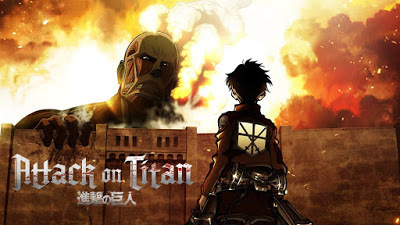
Netflix-sponsored anime school goes back to basics
New training academy for budding anime artists is surprisingly old school in its goals
TOKYO -- For Japan's anime industry, the best of times could soon augur the worst. Never before have Japanese studios been so flush with contracts, licensing deals and cash. And never before has their talent pool been so shallow.
The global market for anime hit a record $24 billion in 2019, according to the Association of Japanese Animations -- and that was before the 2020 pandemic sent audience numbers for streaming anime through the roof.
With a gilded portfolio of international franchise hits like "Attack on Titan," "One Piece" and "Demon Slayer," whose first feature film released last year is now Japan's highest-grossing movie, anime producers have become golden geese for content-hungry online media platforms.
But the windfall has exposed the industry's weak spot: a supply of skilled animators too thin on the ground in Japan to meet the global spike in demand.
To stave off a staffing drought, Netflix has partnered with WIT Studio, original producers of "Attack on Titan," and Tokyo's Sasayuri Video Training Institute to launch a scholarship-only anime school. Called the WIT Animator Academy, the school opened in Tokyo this month to 10 students under the tutelage of Studio Ghibli alum Hitomi Tateno, whose credits include classics like "My Neighbor Totoro" and "Spirited Away."
 At work inside Tokyo's Sasayuri Video Training Institute, whose head instructor worked on such classics as "My Neighbor Totoro" and "Spirited Away."
At work inside Tokyo's Sasayuri Video Training Institute, whose head instructor worked on such classics as "My Neighbor Totoro" and "Spirited Away."The Netflix scholarships cover students' tuition of 600,000 yen ($5,424) and monthly living expenses up to 150,000 yen for six months. The company will provide employment after graduation.
Netflix announced at last week's AnimeJapan 2021 trade fair that it would nearly double its new anime releases this year to 40 titles, matching the 50% rise in anime household viewership it reported last year.
Overall, the domestic industry produces around 300 titles annually. Roughly 200 animators are needed to create each title. Even generous estimates peg the total number of working animators in Japan at 5,000 to 6,000. The math is ominous.
An anime training academy backed by a global content distributor and a Japanese studio is unprecedented. But what is most surprising is that its curriculum is all about craft. Students will learn how to draw by hand, studying traditional 2D animation skills -- not how to dazzle with digital imagery and CG software.
 "This program is trying to bring anime work back to Japan," says anime critic Tadashi Sudo.
"This program is trying to bring anime work back to Japan," says anime critic Tadashi Sudo.The lesson plan may seem counterintuitive. Disney closed its last hand-drawn 2D animation division back in 2011. Netflix's own slate of anime originals, an exclusive lineup of co-productions launched in 2017, is dominated by CG fare from Japanese digital studios like Polygon Pictures and Sola Digital Arts.
"The most important thing about this new school is its emphasis on douga," says anime critic and professor Tadashi Sudo, referring to the labor-intensive, hand-drawn in-between frames that give motion to the more iconic illustrated genga stills, or key frames. "A lot of douga labor is currently outsourced to overseas studios. This program is trying to bring that work back to Japan and maintain the high quality of anime at home."
That is no accident. The project is the brainchild of two veterans of the anime industry, Netflix's chief producer of anime content, Taiki Sakurai, and WIT Studio president and co-founder, George Wada. Now in their 40s, the two worked at adjacent desks 10 years ago for the legendary Production I.G, where they wondered aloud why the next generation of Japanese artists was not being trained.
"This is finally the right moment for this idea," says Sakurai, citing the financial muscle of Netflix. The company is guided by a sense of noblesse oblige, he adds, and understands the responsibility of nurturing young talent. Some studios have tried independently to educate new staff through training programs, "but it isn't working."
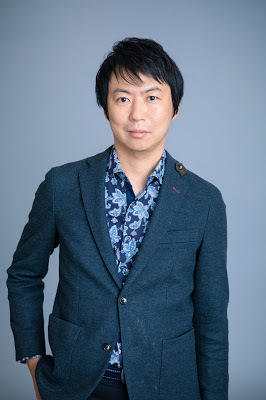 “This is finally the right moment for this idea," says Netflix's Taiki Sakurai.
“This is finally the right moment for this idea," says Netflix's Taiki Sakurai.Modern producers like the 8-year-old WIT Studio have firsthand experience with the domestic labor shortage.
"It's pretty serious," says Wada. "A real crisis. While I respect the older generation, people like Hayao Miyazaki and Yoshiyuki Tomino ("Gundam"), a lot for their hard work and innovation, times have changed. Anime is transitioning from what used to be an art into a form of entertainment. To support that, we need to expand the bottom half, the labor force, to keep up with demand."
Miyazaki's postwar generation of anime pioneers is now retiring. Its artists have time on their hands and hands-on skills to share. While other anime training schools exist in Japan, such as Digital Hollywood University and Yoyogi Animation School, they are not staffed by longtime practitioners of the craft.
 The labor shortage in Japan's anime industry is "a real crisis," says George Wada, president of WIT Studio and executive vice president of Production I.G.
The labor shortage in Japan's anime industry is "a real crisis," says George Wada, president of WIT Studio and executive vice president of Production I.G. Sakurai refers to the age-old distinction between teaching and doing. "Those schools are disconnected from the anime industry and the needs of the anime community," he says. "They just teach what they can teach, and the schools exist to keep the schools alive as businesses. Ours will be about training new professionals taught by working professionals."
But persuading artists to exchange the often chaotic, intuitive swirl of studio life for the rigidity of the classroom is no easy feat. While many teachers may lack the fundamental knowledge of on-the-job execution, working professionals do not always have the self-awareness and talent to communicate why and how they do what they do.
Sakurai and Wada feel lucky to have Sasayuri's Tateno piloting their program, and they are scrambling to enlist other instructors like her. The former Ghibli in-betweener is a strictly pencil-on-paper artist, says Sakurai. "She doesn't do CG." Her goal is not only to teach students how to draw well, but also to instill mental discipline, a dedication to diligence in the pursuit of excellence.
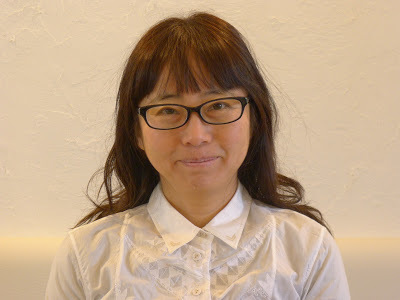 "I am teaching with the same energy and passion I put into producing my work at Ghibli," says Hitomi Tateno, head instructor at the new WIT Animator Academy, opening this month.
"I am teaching with the same energy and passion I put into producing my work at Ghibli," says Hitomi Tateno, head instructor at the new WIT Animator Academy, opening this month.Tateno greets the pedagogical challenge as something of a relief from her studio days. "The responsibility of opening up the future for young animators is very rewarding," she says. "The stress of meeting deadlines at Ghibli was enormous. I feel more at ease teaching, but I am teaching with the same energy and passion I put into producing my work at Ghibli."
All three partners hope future anime training programs will emerge that adopt their curriculum and approach, and that more financial support will be forthcoming.
The survival of global ad-free streaming services relies almost entirely upon constant subscriber growth, especially across population-rich Asia, where anime has thrived for generations. But without fresh talent, the studios' deep-pocket clients like Netflix are in danger of placing big bets on properties that either cannot be delivered, or are just not very good.
Roland Kelts is the author of "Japanamerica: How Japanese Pop Culture has Invaded the U.S." and a visiting professor at Waseda University.
Netflix sponsors anime training school amid Japan labor crisis
This month, Netflix and WIT Studio ("Attack on Titan") opened the WIT ANIMATOR ACADEMY, a scholarship-only training school at Tokyo's Sasayuri Video Training Institute. Despite massive commercial success, the anime industry is in crisis because there aren't enough skilled artists in Japan, and even fewer who are learning how to draw.
I interviewed the main players behind the program for NIKKEI.

Netflix-sponsored anime school goes back to basics
New training academy for budding anime artists is surprisingly old school in its goals
TOKYO -- For Japan's anime industry, the best of times could soon augur the worst. Never before have Japanese studios been so flush with contracts, licensing deals and cash. And never before has their talent pool been so shallow.
The global market for anime hit a record $24 billion in 2019, according to the Association of Japanese Animations -- and that was before the 2020 pandemic sent audience numbers for streaming anime through the roof.
With a gilded portfolio of international franchise hits like "Attack on Titan," "One Piece" and "Demon Slayer," whose first feature film released last year is now Japan's highest-grossing movie, anime producers have become golden geese for content-hungry online media platforms.
But the windfall has exposed the industry's weak spot: a supply of skilled animators too thin on the ground in Japan to meet the global spike in demand.
To stave off a staffing drought, Netflix has partnered with WIT Studio, original producers of "Attack on Titan," and Tokyo's Sasayuri Video Training Institute to launch a scholarship-only anime school. Called the WIT Animator Academy, the school opened in Tokyo this month to 10 students under the tutelage of Studio Ghibli alum Hitomi Tateno, whose credits include classics like "My Neighbor Totoro" and "Spirited Away."
 At work inside Tokyo's Sasayuri Video Training Institute, whose head instructor worked on such classics as "My Neighbor Totoro" and "Spirited Away."
At work inside Tokyo's Sasayuri Video Training Institute, whose head instructor worked on such classics as "My Neighbor Totoro" and "Spirited Away."The Netflix scholarships cover students' tuition of 600,000 yen ($5,424) and monthly living expenses up to 150,000 yen for six months. The company will provide employment after graduation.
Netflix announced at last week's AnimeJapan 2021 trade fair that it would nearly double its new anime releases this year to 40 titles, matching the 50% rise in anime household viewership it reported last year.
Overall, the domestic industry produces around 300 titles annually. Roughly 200 animators are needed to create each title. Even generous estimates peg the total number of working animators in Japan at 5,000 to 6,000. The math is ominous.
An anime training academy backed by a global content distributor and a Japanese studio is unprecedented. But what is most surprising is that its curriculum is all about craft. Students will learn how to draw by hand, studying traditional 2D animation skills -- not how to dazzle with digital imagery and CG software.
 "This program is trying to bring anime work back to Japan," says anime critic Tadashi Sudo.
"This program is trying to bring anime work back to Japan," says anime critic Tadashi Sudo.The lesson plan may seem counterintuitive. Disney closed its last hand-drawn 2D animation division back in 2011. Netflix's own slate of anime originals, an exclusive lineup of co-productions launched in 2017, is dominated by CG fare from Japanese digital studios like Polygon Pictures and Sola Digital Arts.
"The most important thing about this new school is its emphasis on douga," says anime critic and professor Tadashi Sudo, referring to the labor-intensive, hand-drawn in-between frames that give motion to the more iconic illustrated genga stills, or key frames. "A lot of douga labor is currently outsourced to overseas studios. This program is trying to bring that work back to Japan and maintain the high quality of anime at home."
That is no accident. The project is the brainchild of two veterans of the anime industry, Netflix's chief producer of anime content, Taiki Sakurai, and WIT Studio president and co-founder, George Wada. Now in their 40s, the two worked at adjacent desks 10 years ago for the legendary Production I.G, where they wondered aloud why the next generation of Japanese artists was not being trained.
"This is finally the right moment for this idea," says Sakurai, citing the financial muscle of Netflix. The company is guided by a sense of noblesse oblige, he adds, and understands the responsibility of nurturing young talent. Some studios have tried independently to educate new staff through training programs, "but it isn't working."
 “This is finally the right moment for this idea," says Netflix's Taiki Sakurai.
“This is finally the right moment for this idea," says Netflix's Taiki Sakurai.Modern producers like the 8-year-old WIT Studio have firsthand experience with the domestic labor shortage.
"It's pretty serious," says Wada. "A real crisis. While I respect the older generation, people like Hayao Miyazaki and Yoshiyuki Tomino ("Gundam"), a lot for their hard work and innovation, times have changed. Anime is transitioning from what used to be an art into a form of entertainment. To support that, we need to expand the bottom half, the labor force, to keep up with demand."
Miyazaki's postwar generation of anime pioneers is now retiring. Its artists have time on their hands and hands-on skills to share. While other anime training schools exist in Japan, such as Digital Hollywood University and Yoyogi Animation School, they are not staffed by longtime practitioners of the craft.
 The labor shortage in Japan's anime industry is "a real crisis," says George Wada, president of WIT Studio and executive vice president of Production I.G.
The labor shortage in Japan's anime industry is "a real crisis," says George Wada, president of WIT Studio and executive vice president of Production I.G. Sakurai refers to the age-old distinction between teaching and doing. "Those schools are disconnected from the anime industry and the needs of the anime community," he says. "They just teach what they can teach, and the schools exist to keep the schools alive as businesses. Ours will be about training new professionals taught by working professionals."
But persuading artists to exchange the often chaotic, intuitive swirl of studio life for the rigidity of the classroom is no easy feat. While many teachers may lack the fundamental knowledge of on-the-job execution, working professionals do not always have the self-awareness and talent to communicate why and how they do what they do.
Sakurai and Wada feel lucky to have Sasayuri's Tateno piloting their program, and they are scrambling to enlist other instructors like her. The former Ghibli in-betweener is a strictly pencil-on-paper artist, says Sakurai. "She doesn't do CG." Her goal is not only to teach students how to draw well, but also to instill mental discipline, a dedication to diligence in the pursuit of excellence.
 "I am teaching with the same energy and passion I put into producing my work at Ghibli," says Hitomi Tateno, head instructor at the new WIT Animator Academy, opening this month.
"I am teaching with the same energy and passion I put into producing my work at Ghibli," says Hitomi Tateno, head instructor at the new WIT Animator Academy, opening this month.Tateno greets the pedagogical challenge as something of a relief from her studio days. "The responsibility of opening up the future for young animators is very rewarding," she says. "The stress of meeting deadlines at Ghibli was enormous. I feel more at ease teaching, but I am teaching with the same energy and passion I put into producing my work at Ghibli."
All three partners hope future anime training programs will emerge that adopt their curriculum and approach, and that more financial support will be forthcoming.
The survival of global ad-free streaming services relies almost entirely upon constant subscriber growth, especially across population-rich Asia, where anime has thrived for generations. But without fresh talent, the studios' deep-pocket clients like Netflix are in danger of placing big bets on properties that either cannot be delivered, or are just not very good.
Roland Kelts is the author of "Japanamerica: How Japanese Pop Culture has Invaded the U.S." and a visiting professor at Waseda University.
April 1, 2021
Video: "Japan Cats," a min-documentary about cats in Japanese culture
I was hired to host this short documentary film about the central role cats play in Japanese culture. "Japan Cats," directed by Academy Award nominee Geoffrey O'Connor and shot in Wakayama and Tokyo, was a lot of fun to make, and I remain honored to be a small part of it. No 'weird Japan' clickbait memes, but a rich look at the deeper connections, spiritual and personal, between the Japanese and their cats.
Yes, there's Natsume Soseki's "I am a Cat," Hello Kitty, Doraemon, nearly everything written by Haruki Murakami, Maneki Neko ("Lucky Cat"), Bakeneko ("shapeshifting cat") and plenty more. But there's also Tama, the stationmaster cat, and her successor, Nitama (Tama 2), whom you'll meet here, along with cat cafes and memorials.
Thanks to AMV BBDO for producing, and SHEBA for supporting. Hope you enjoy the show.
March 25, 2021
Video: Japanese Pop Culture's Successes in Covid-19 for The Japan Society & The Japan-America Society of Dallas/Fort Worth
Wonderful review of our panel on "Japanese Pop Culture's Successes in Covid-19" for The Japan Society and The Japan-America Society of Dallas/Fort Worth, featuring William Tsutsui, Aki Nakanishi, Seio Nakajima and me. Demon Slayer, anime vtubers, Evangelion, record-breaking sales in anime and manga, and the virtues of lockdown/isolation helped Japan's pop culture industries innovate and flourish against the odds.
"The panel includes a history lesson on Japanese isolationism in the past, plenty of talk on Demon Slayer, Japanese and Western co-productions, and how the pandemic might affect Japanese entertainment in the future, among other things. At just under an hour and twenty minutes, it gives interesting insight and perspective on the issues."
Thanks to Danica Davidson for the great story. Watchable here:
Video: Japanese Pop Culture's Successes in Covid-19 for The Japan Society & The Japan-America society of Dallas/Fort Worth
Wonderful review of our panel on "Japanese Pop Culture's Successes in Covid-19" for The Japan Society and The Japan-America Society of Dallas/Fort Worth, featuring William Tsutsui, Aki Nakanishi, Seio Nakajima and me. Demon Slayer, anime vtubers, Evangelion, record-breaking sales in anime and manga, and the virtues of lockdown/isolation helped Japan's pop culture industries innovate and flourish against the odds.
Thanks to Danica Davidson for the great story. Watchable here:
March 19, 2021
Photos from Fukushima: 10 years after disaster, with Ko Sasaki
Fukushima: A photographer's 10-year journey through wreckage and recovery
Photographer Ko Sasaki drove me through the Fukushima evacuation zone in the summer of 2016. I had been there twice before to record programs for National Public Radio and NHK, but I was hired by both to report post-disaster stories of resilience and show what had changed since the March 11, 2011 earthquake, tsunami and nuclear meltdown. Sasaki was showing me what hadn't.
Sasaki's photographs appear in The New York Times, Forbes magazine, Wired and other mainstream publications. But his obsession with Fukushima and its people comes from a personal commitment: He feels that the region is still being exploited, mistreated and misrepresented by Japan's government and corporate officials, who cling to tatemae (public face and behavior, or "keeping up appearances"), he says, without a hint of honne (genuine inner sentiment and emotional truth).
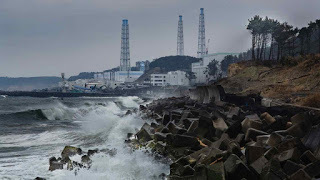 2011
2011He is galled by the government's plan to start the Olympic torch relay in Fukushima. It will bring nothing to the people who are still suffering, he points out, and will do next to nothing to revive the local economy or raise real awareness of the ongoing struggles, psychological and otherwise, in the wake of nearly 19,000 dead or missing.
In October of last year, the Japanese government announced that it plans to dump water from the storage tanks into the sea off the coast of Fukushima after 2022. As of September last year, the stored water totaled 1.23 million tons, with an additional 180 tons of water contaminated every day. The water has been filtered and the government claims it is no longer contaminated.
[image error] 2019
But Sasaki says that the plan is careless and insensitive. Next year, when the evening news reports that Fukushima's water containment tanks have been emptied into the sea, consumers across Japan will reject any claims to the safety of the region's products, science be damned. Every effort to win public trust will be washed away with the water.
In 2016, through our meetings with survivors in regions surrounding the nuclear plant, our drives around vacant coastal back roads and slow strolls through abandoned schools and dilapidated gymnasiums, shops, restaurants and cemeteries, I felt a kinship with Sasaki, a sense of why he felt this ongoing story was so urgent.
For me, too, the mission feels personal. My Japanese grandparents are both from northern Japan, where they raised my mother and uncle, and where I attended kindergarten. After 3/11, my mother, who now lives in the U.S., asked me what happened to Rikuzentakata, a coastal city devastated by the wave. "That was where I first saw the ocean," she told me, recalling a childhood visit with her father. "It was at night at the inn dad had reserved. The moon showed the sea to me."
Sasaki's vision of Fukushima is of a land in limbo. His photographs show life frozen in place, bodies broken, habits numbly reinhabited, technology harnessed for useless display. His pictures are photo-ops of missed opportunity. "Life goes on," we like to say, and it does, but Sasaki's photos of Fukushima over the past 10 years speak a more essential imperative: You must change your life.
March 16, 2021
WHY Japanese Pop Culture thrives in Covid: ZOOM talk this Thurs. March 18 (US)/Fri. March 19 (JP)
WHY IS JAPANESE POP CULTURE THRIVING?
Hope you'll join us for this free Zoom conversation with Harvard's Bill Tsutsui (GODZILLA ON MY MIND), Waseda's Seio Nakajima, and Aki Nakanishi from the Portland Japanese Garden and the US Embassy, Tokyo. It's free and you can register for nuthin here.
Sponsored by The Japan-America Society Dallas/Fort Worth, The Japan Society, The Japan-America Society Oregon and Dentsu.
Let's talk.
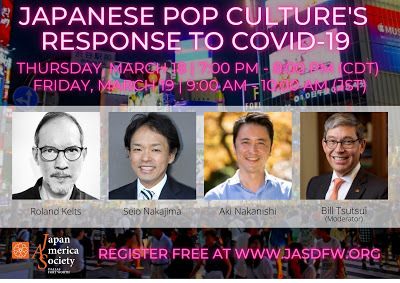
March 10, 2021
Ten Years After Disaster: My essay on Japan's 2011 triple catastrophes and "Ghosts of the Tsunami" for Words Without Borders
After Disaster: Embracing a Living Past through “Ghosts of the Tsunami”
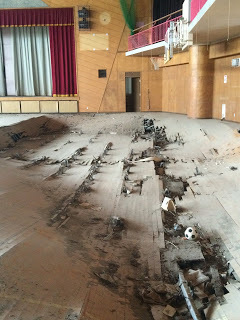 Gymnasium, Namie, 2016
Gymnasium, Namie, 2016Seven years ago Japan underwent its most devastating national crisis since the end of World War II. On March 11, 2011, the genpatsu shinsai triple natural and industrial disaster—a 9.0 earthquake, a tsunami that rose to 128 feet and flooded 217 square miles, and a meltdown and radiation leak at the Fukushima Daiichi nuclear power plant—is now cited as the costliest such catastrophe in the world, running to an estimated $400 billion as of 2017.
At the time, the impact reverberated nationwide—physically, in the form of aftershocks that rattled buildings throughout the night, and logistically, as distribution and transportation routes were hampered or shut down entirely, leaving some store shelves periodically bare. Japan’s network of nuclear power plants went offline, and the term jishuku, denoting a measure of self-restraint in the face of others’ suffering, was manifested in the form of reduced electrical use (switching off appliances at home and lighting fixtures in offices and convenience stores) and the cancellation of that spring’s traditional hanami cherry blossom-viewing parties out of respect for the victims. On television, a relentless series of public service announcements presented by the Ad Council of Japan urged viewers not to hoard consumer products, waste energy, or overburden lines of communication with unnecessary chatter.
But by 2018, jishuku was nearly a forgotten concept. The lights were back on, blazing late into the night in Tokyo skyscrapers and inside convenience stores across the land. In the summer, air conditioners pump breezes into subway cars and entire underground stations. In the spring, the hanami parties roar back to life as soon as the cherry trees begin to bloom. Four of the nation’s nuclear power plants are now online, and last year Tokyo Electric Power Co. (TEPCO), operator of the damaged Fukushima Daiichi plant, received initial permission to restart two reactors at Kashiwazaki-Kariwa—the largest nuclear power plant in the world.
Overall, the Japanese economy, while hardly booming, has stabilized. The unemployment rate recently dropped to 2.7 percent, its lowest in twenty-five years, while the jobs-to-applicant ratio spiked to 1.56, the highest since 1974. The growth rate is low but sustained: the economy grew for the eighth consecutive quarter at the end of 2017, its longest streak in nearly three decades. Foreign demand is up, as is business confidence, and there are early signs that both wage and price deflation are easing. More retirees and women have joined the workforce, and the college graduates I’ve interviewed are cautiously optimistic about their futures. “I have quite a few job offers,” a student at Toyo University told me. “So if one or two of them don’t work out, I feel comfortable with my options.”
Given the relative calm and steady progress of Japan seven years after the genpatsu shinsai, the settling in of a kind of cultural amnesia may be understandable, especially in the relatively insulated confines of Tokyo, hundreds of miles away. Each anniversary of the event is marked by memorials and media reportage, of course, usually featuring reporters standing outside the gates of the exclusion zone or visiting the remaining temporary shelters and issuing target dates for returnees (2020, 2022, and so on). Local residents and officials are interviewed, expressing a solemn mix of resolve and thinly concealed dismay. And footage from the day itself is trotted out to remind us what it looked like—film that now seems to have about as much impact as old newsreels from, well, World War II.
This year it is the power of prose that jolts me back to the experience of the disasters, forcing me to undergo a personal reckoning with what they mean.
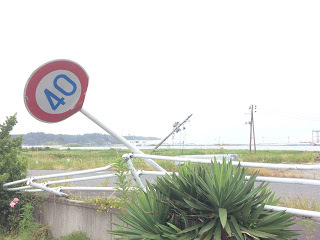 Roadside, Futaba
Roadside, FutabaThis year it is the power of prose that jolts me back to the experience of the disasters, forcing me to undergo a personal reckoning with what they mean, beyond the redundant imagery and updated statistics. British author and journalist Richard Lloyd Parry’s third book, Ghosts of the Tsunami (MCD, 2017), brings us closer to the human drama of what happened in Tohoku, and to all of Japan, and exposes how the genpatsu shinsai has in fact reshaped the nation’s soul without crushing it. The book is also a reminder that roiling emotions often lie beneath Japan’s apparent placidity. Overseas, Japanese were admired in the aftermath of the 2011 disasters. Videos showed single-file lines of survivors awaiting water being turned away and heading home peacefully, with neither complaint nor rancor. But Ghosts reveals an undertow of rage and distrust in unforced, metaphorical lyricism, as when its author describes a river suddenly swollen to violent life by the tsunami wave: “The surface of the water was bulging and flexing like the muscles beneath the skin of an athlete.”
I flew out of Tokyo two days before March 11. There was a mild tremor as I packed, causing the overhead lamp in my kitchen to sway. I crouched over my suitcase, arms extended in my usual high-alert stance, but the earth soon resettled and I went back to folding my socks. Mild side-to-side rocking and the occasional vertical jolt are standard stuff in Japan, the most earthquake prone country in the world.
During the days of the disaster and its immediate aftermath, I was in Oregon and California, giving university lectures and an NPR interview about, of all things, Japan’s obsession with apocalypse in its art and popular culture. I would not have remembered that tremor on the ninth had it not been for what happened on the eleventh. I first learned of the quake over dinner at a gastro-pub in Eugene, Oregon, minutes after it struck, via the quavering voice and halting sentences of my Japanese girlfriend calling from her Tokyo apartment.
For two weeks, I slept poorly and woke early in my hotel rooms. Each morning dawned with news of expanding crises. My family, friends, and girlfriend emailed updates from Tokyo on the aftershocks, rising contamination levels, and diminishing supplies. The Japanese government’s increasingly desperate emergency responses exacerbated my addiction to dread. Six days in, footage of a helicopter deployed to dump water over the nuclear plant’s smoking dome, water that was fast dispersed by the wind into contrails of white vapor spraying far from its target, looked to me like the anticlimax in a theater of futility. (“I really think Japan is sinking,” one Japanese journalist told me over Skype.) If, as the American novelist Don DeLillo wrote of televised calamities, “each disaster makes us crave a bigger one,” Japan’s 2011 triple whammy kept on giving.
As a resident of Tokyo and New York, I had a chilling sense of déjà vu as I watched the news and frantically emailed friends and family across the Pacific. On 9/11, 2001, I had just landed in Tokyo from New York, and had gone through the same mindless routine: watching online video streams from thousands of miles away, emailing and phoning friends and family helplessly as one of my hometowns suffered catastrophe. It was like banging my fist on a shop window in whose display all of my personal photos and letters were going up in flames.
The visuals of Japan’s devastation played out on TV, smartphone, and laptop screens, and they now loop endlessly on YouTube as epic animations of apocalypse. Yet while the clips and photographs provide ample evidence of what the disasters looked and sounded like, they do little in the way of conveying the experience as it was physically felt, and the emotional carnage it left behind.
In Ghosts of the Tsunami, Richard Lloyd Parry wisely sidesteps the quake and meltdown and focuses on the black wave. Of the three disasters, the tsunami caused the greatest loss of life (roughly 18,500 perished, of which some 2,500 bodies are still missing), leveled entire towns, and smashed through the seawall around the Fukushima reactor. Damage from the quake was mostly cosmetic by comparison, and despite hysteria over the nuclear meltdown (much of it rising from outside of Japan), not a single death has thus far been ascribed directly to radiation.
It would be hard for Lloyd Parry to stand out any more in largely monoethnic Japan: he is tall and lean, with pale blue eyes and raffish light brown hair. He has lived in Japan for twenty-two years, long enough to manage the verbal niceties and physical gestures that ensure smooth relations between gaijin (outside people) and Japanese nationals. He’s not a fluent Japanese speaker (he credits his “excellent interpreter” for the candor of his subjects), but he has acquired a kind of fluency in Japaneseness—a way of being and behaving that helps put his subjects at ease, enabling him to prod them further without appearing rude. These are stereotypes, to be sure, but the English and the Japanese share a few similar traits: island peoples known for their unique garden aesthetics and social discretion (stiff upper lips), with a sometimes acute sensitivity to etiquette and emotional restraint.
“I wanted to write about the tsunami because its stories were so personal,” Lloyd Parry tells me over a dinner of sashimi and ankimono (monkfish liver) in Yoyogi Uehara, a neighborhood in western Tokyo. “The Fukushima nuclear story was more political, as it is to this day. It was clearly a man-made disaster. And the earthquake was damaging, but relatively brief. But the tsunami lives on.” Its power, destruction, and casualties are almost unimaginable, he adds. “Insurers call it an ‘act of God.’ I really wanted to know how that felt.”
How to transcend the linguistic and cultural divides? Where to find the points of empathy?
Lloyd Parry first traveled to the damaged northern coastline the day after the disaster as the Asia bureau chief for The Times of London. In those early weeks of urgent rescue efforts, he was culling stats and quotes and filing daily bulletins. But as the catastrophe faded from global headlines, he wanted to find the story of the event that would speak to readers beyond the Japanese archipelago. How to transcend the linguistic and cultural divides? Where to find the points of empathy? “You have to do the reporting, of course, but it’s not enough to set down the bare facts,” he says. “You have to use other techniques, many of which come from the domain of fiction. You have to use more imaginative language that engages the deeper emotions of the reader.”
The peculiar and mysterious calamity at Okawa Elementary School has been recounted in other media as a microcosm of the tsunami’s horror. Japanese schools are built to strict and exacting architectural safety standards to withstand the land’s geographical vulnerabilities: earthquakes, tsunamis, typhoons, and volcanoes being the most damaging. Children are a high priority in a nation buffeted by numerous “acts of God” and school buildings are among the safest places to be when one strikes. As Lloyd Parry notes, of the 18,500 total casualties, only seventy-five were children who lost their lives while attending school. Seventy-four of them died at Okawa. “As soon as I learned about the Okawa school, I realized it was going to be the central story,” Lloyd Parry says. “Those children didn’t die just because of an act of God, but also because of the failure of human beings. It’s those two things, the act of God and the human failure, that give the story its power.”
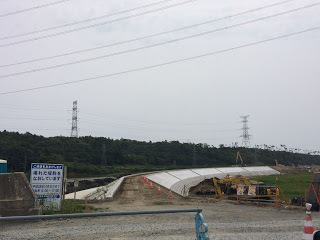 Building a Wall
Building a WallOkawa is in Tohoku, a mountainous northern prefecture of farmers, fishermen, craftspeople, monks, and innkeepers, better known for its folktales about spirits and goblins and hearty perseverance than what Lloyd Parry aptly calls “lacquered” Tokyo. My now deceased grandparents were both Tohoku natives—my grandfather from Esashi, a village south of Morioka, one of the region’s capital cities, and my grandmother from Akita, on the Sea of Japan. I stayed with them as a child and visited frequently as a teenager, finding echoes of the New England where I was raised: the grassy overgrown pathways, barren hills, and constant close proximity to the sea.
I have since returned as a writer and journalist to interview tsunami survivors, and I learned more about the pragmatism of the locals, their uniform jeans, overalls, flannels, and baseball caps, and the unfussy openness with which many describe their still-raw pain and outrage over what happened to their communities. “The tsunami happens every day,” a farmer named Takayuki Ueno told me in the coastal town of Minamisoma, roughly 200 miles north of Okawa. Ueno lost four family members, his parents, son and daughter, to the wave. “It happens every night, too. In my dreams.”
Lloyd Parry is doubly an outsider in Tohoku—removed both from his native land and language, and his urban Tokyo environs. In Ghosts, he renders the area’s natural landscape with the fresh eyes of an explorer: “Much of the beauty of Okawa derived from the many things that were not there—those everyday uglinesses unthinkingly accepted by city dwellers. Even as we drove in that September afternoon, I was conscious of their absence. Between the outskirts of Ishinomaki and the sea, there were few traffic lights, road signs, vending machines, or telegraph poles. There were no strip-lit restaurants or twenty-four-hour convenience stores, no billboards or cash machines. Most transforming of all was the character of local sounds: the song of birds and cicadas in the trees, the low noise of the river, the slap of waves, and a subtle, pervasive, barely audible susurration, which took me days to identify—that of air passing through reeds.”
Lloyd Parry spent three years returning to the region to interview and earn the trust of local residents, government and school officials, parents, children, and Buddhist priests. The result is a book that unveils a rural Japan alien even to many Japanese, let alone Tokyo expats or foreign tourists, a novelistic narrative whose character-driven suspense is reminiscent of Truman Capote’s In Cold Blood—another story written by an urbane outsider decoding small-town life. Lloyd Parry ultimately pursued three subjects that he cast as the story’s main characters: Naomi Hiratsuka, who learns how to operate an excavator to find the remains of her daughter in the rubble; Sayomi Shito, who resorts to licking the mud from her daughter’s corpse when two towels become saturated; and Junji Endo, a middle-aged teacher at the school who survives, dazed, but whose personal accounts of his escape don’t add up. Endo is the cipher at the core of the book’s inconsolable narrative: he saved himself amid a catastrophe, children died on his watch—and he is unable or unwilling to talk about it.
For the West, in the post-9/11 world, living with an awareness of imminent catastrophe has become de rigueur, especially in major cities. But the terror in “terrorism” emanates from human sources, perpetrators whose goals are political and/or religious, and whose acts of societal rage have roots in a logical design, however twisted, targeting specific victims. Ghosts succeeds most in enveloping its reader in Japan’s psychological membrane, where a largely peaceful and reserved people coexist with intimations of apocalypse, and whose deepest spiritual devotion is to the intimate presence of the dead. Addressing what he calls Japan’s “common sense” approach to death, Lloyd Parry quotes UCLA religion scholar Herman Ooms: “The dead are not as dead as they are in our own (Western) society. It has always made sense in Japan as far back as history goes to treat the dead as more alive than we do . . . even to the extent that death becomes a variant, not a negation of life.”
The message is clear: the dead are here with us, and we are giving back to them what they continue to give to us.
Whenever I visit the homes of my Japanese relatives or my girlfriend’s parents, the first stop is the butsudan, or family altar, a polished, towering mahogany testament to the deceased, adorned with fresh fruit and other gifts, and a photo or two of the dead. A bell is rung, hands are clasped, and heads are bowed in prayer. The moment is ritualistic but alive with simplicity: we’re all “home.” We light incense sticks and let them burn as we talk and prepare to dine. The message is clear: the dead are here with us, and we are giving back to them what they continue to give to us.
Living alongside the dead means ghosts, of course, and Japanese lore is chock full of them, from yokai (goblins) to yurei (haunted dead spirits). During the country’s iconic 500-plus-year-old summer festival, O-bon, ancestors return to their family altars to be honored by the living, and are then sent back to the otherworld with flames to light the way, most dramatically in Kyoto, where massive bonfires in the shape of kanji characters are ignited at dusk in the sides of surrounding mountains.
The ghosts Lloyd Parry finds in post-tsunami Tohoku are both mundane and exotic. Some are simple shades of the dead, hailing taxis to homes that no longer exist and disappearing upon arrival, or sitting in on tea and leaving moist tatami mats behind. Others are grotesque nightmares. One unemployed man whose home was spared sees Hieronymus Bosch-like parades of dying and disfigured humans and animals trudging and crawling through river mud, driving him mad until his demons are exorcised by a local priest, after which viscous pink jelly flows from his nostrils. No one knows why.
In his review of the book, author Pico Iyer, another longtime expat based in Japan, writes about “how profoundly primal beliefs and atavistic rites” undergird even the sleekest of Japan’s postmodern surfaces. This strikes me as the essence of the Japanese people’s inner strength, their core sense of continuity and self-identity. Despite Japan’s many disasters, both manmade (the atomic bombings during World War II; the 3/11 Fukushima meltdown sixty-six years later) and natural, and the great disruptions and transformations of its native historical narrative by outsiders, its people maintain a spiritual faith in practices that span centuries, rituals that are tied to no distant religious authorities (Vatican City, Mecca), but are instead unquestionably embraced at home.
Upheaval and disruption have always been endemic to Japan—“part of the fact of being born Japanese,” as Lloyd Parry says—which is the principle reason, I believe, that societal stability is so highly valued by its people and institutions, whatever the economic costs. Rather than resist the catastrophes that form the very foundation of its character, Japan celebrates loss in subtle daily practice. But you have to be patient and pay attention to feel it. To paraphrase a Japanese scholar explaining the culture’s belief in both Buddhism and Shinto, and the supreme importance of ancestors to each: the only true religion in Japan is being Japanese.
A different version of this essay appears in the Japanese magazine Spotlight.
My documentary for NHK on 3/11 volunteers
On the 10th anniversary of the genpatsu shinsai triple disasters on March 11, 2011—earthquake, tsunami and nuclear meltdown—here is the documentary film I hosted for NHK on the volunteer base in Tono, the birthplace of Tono monogatari, a font for Japanese folklore.
March 4, 2021
Live from Dallas: Japanese Pop Culture's Response to Covid 19 for Japan Society & Japan-America Society
I'm honored and chuffed to be joining Harvard's Bill Tsutsui, author of Godzilla on My Mind, Waseda's Seio Nakajima, and Curator/Cultural Affairs attache Aki Nakanishi on Thursday, March 18th (US)/Friday, March 19th (JP) for this panel discussion of Japanese Pop Culture in the age of Covid. As you may already know, in many unexpected ways, it has thrived.
Registration is free here. Please join us.




